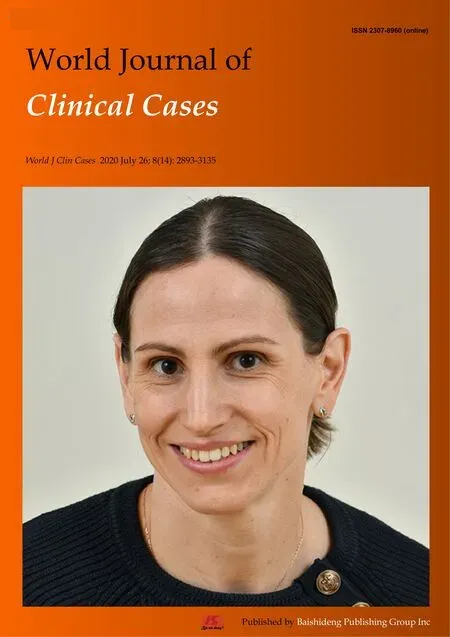Dental focal infection-induced ventricular and spinal canal empyema:A case report
2020-09-14
Hang Xue,Xiao-Hui Wang,Qiang Wei,Hong-Fa Yang,Department of Neurotraumatic Surgery,The First Hospital of Jilin University,Changchun 130021,Jilin Province,China
Lin Shi,Department of Neurosurgery,The Affiliated Hospital of Changchun University of Traditional Chinese Medicine,Changchun 130021,Jilin Province,China
Yi-Ming Zhang,Department of Neurosurgery,Dong’e Hospital Affiliated to Shandong First Medical University,Dong’e 252200,Shandong Province,China
Abstract
BACKGROUND
Dental focal infection-induced ventricular and spinal canal empyema is an extremely rare,severe,acute disease that is clinically associated with extremely high morbidity and mortality.Traditional cerebrospinal fluid (CSF) bacterial culture is time-consuming,with a low positive rate,which frequently results in severe irreversible consequences.The next-generation sequencing technique is an emerging pathogenic microorganism detection method that can obtain results in a short time with high accuracy,thus providing great assistance in the clinical diagnosis and treatment of this disease.
CASE SUMMARY
This paper reports a rare case of dental focal infection-induced ventricular and spinal canal empyema.During the course of treatment at a local hospital,the patient had negative results from repeated CSF bacterial cultures and was empirically given vancomycin treatment.After transfer to our hospital,the nextgeneration sequencing technique was adopted to determine that the pathogenic microorganisms were multiple anaerobic infectious bacteria derived from the oral cavity.The antibiotic therapeutic scheme was adjusted in a timely manner,and the ventricular and spinal canal inflammation was also controlled.However,the antibiotics that had been applied at the local hospital were not able to cover all pathogenic microorganisms,which resulted in irreversible injury to the brain stem,finally leading to patient death.
CONCLUSION
Dental focal infection-induced ventricular and spinal canal empyema is an extremely rare,severe,acute disease with high morbidity and mortality.Any delay in diagnosis and treatment will result in irreversible consequences.The early application of the next-generation sequencing technique can obtain results in a short time and clarify a diagnosis.Appropriate antibiotic treatment combined with suitable surgical intervention is the key to managing this disease.
Key words:Ventricular empyema;Next-generation sequencing;Dental focal infection;Antibiotics;Surgery;Case report
INTRODUCTION
Dental focal infection-induced ventricular and spinal canal empyema is an extremely rare,severe,acute disease with high morbidity and mortality.Fewer than 5% of brain abscesses that develop from a dental focal infection manifest as pyocephalus,which is extremely rare[1,2].Analysis by computed tomography (CT) is the preferred imaging examination,while magnetic resonance imaging (MRI) is an examination modality with higher identification ability than CT,and it is the essential imaging analysis,if feasible based on the patient condition[2].Traditional laboratory bacterial culture is time-consuming,with a low positive rate[2,3].The next-generation sequencing technique is an emerging pathogenic microorganism detection method that can obtain results in a short time with high accuracy and provide great assistance in the clinical diagnosis and treatment of this disease[4].
CASE PRESENTATION
Chief complaints
A 53-year-old female patient was admitted to the Neurotrauma Surgery Department of Jilin University First Hospital on September 13,2019,due to intermittent fever for 6 d and unconsciousness for 4 d.
History of present illness
Initially,the patient was admitted to a local hospital as a result of hypertensive disease;1 day after admission,she had fever,with the highest body temperature of 38.8 °C;2 d later,the patient had sudden unconsciousness.Emergency head MRI revealed the fester-traditional cerebrospinal fluid (CSF) level inside the posterior horns of bilateral lateral ventricles,the fester diffuse weighted imaging (DWI) showed a high signal,and the apparent diffusion coefficient map showed a low signal (Figure 1).Thereafter,the patient was transferred to the Neurosurgery Department to receive emergency extraventricular drainage.Multiple CSF bacterial cultures after surgery revealed negative results,and the local physician empirically administered vancomycin treatment to the patient.After surgery,the patient was in continuous narcosis,and her family visited our hospital to seek further diagnosis and treatment.
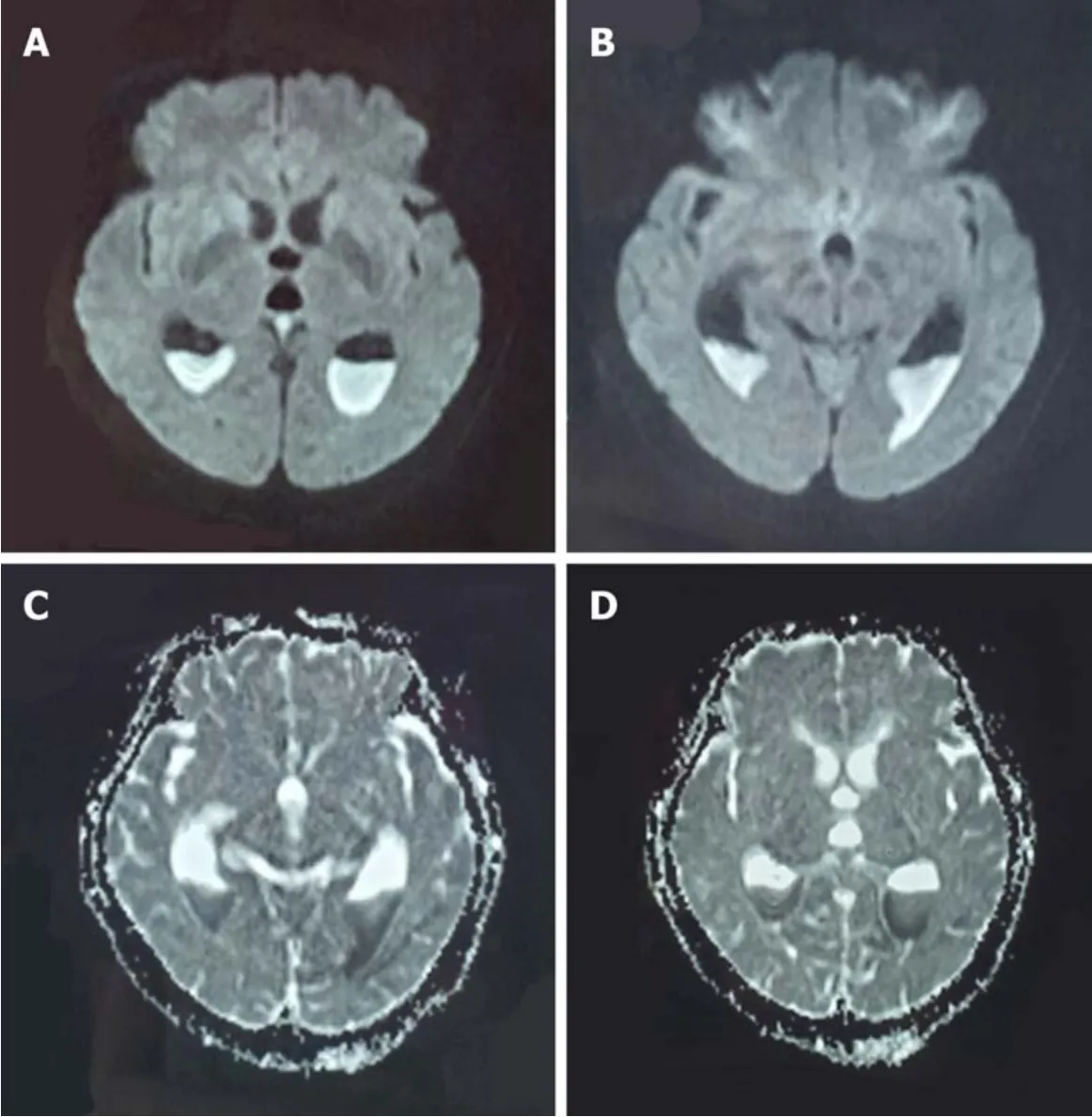
Figure1 Head magnetic resonance imaging before admission.
History of past illness
The patient had a past history of hypertension for 10 years and received oral antihypertensive drug therapy,but no ideal control effect was achieved.In addition,the patient had had dental caries for 3 years,and she did not receive systemic treatment after the medulla oblongata treatment 1 month prior.
Personal and family history
The patient had a free personal and family history.
Physical examination upon admission
Physical examination upon admission showed that the patient was in narcosis with no autonomous respiration.The Glasgow Coma Scale score was E3V1M4.Extensive lesions and loosening of the second molars in the bilateral mandibles were found.CSF culture and next-generation sequencing of pathogenic microorganisms were carried out after admission.The intraventricular CSF culture results were negative,while pathogenic microorganism next-generation sequencing suggestedFusobacterium,Porphyromonas,Solobacterium,Prevotella,Dialister,Fusobacterium nucleatum,Fusobacterium hwasookii,Porphyromonas endodontalis,Solobacterium moorei,Prevotella intermedia,andDialister pneumosintes(Figure 2A and B).
Imaging examinations
Head MRI revealed a quasicircular liquid signal opacity in the left cerebellum.The adjacent brain stem was compressed,the fourth ventricle became narrower,and ventricular hydrops accompanied by paraventricular edema was observed (Figure 3).Spinal MRI revealed stripe-like long T1 and long T2 signals in C7-T2 spinal canals(Figure 4).
FINAL DIAGNOSIS
The final diagnosis of the presented case was ventricular and spinal canal empyema.
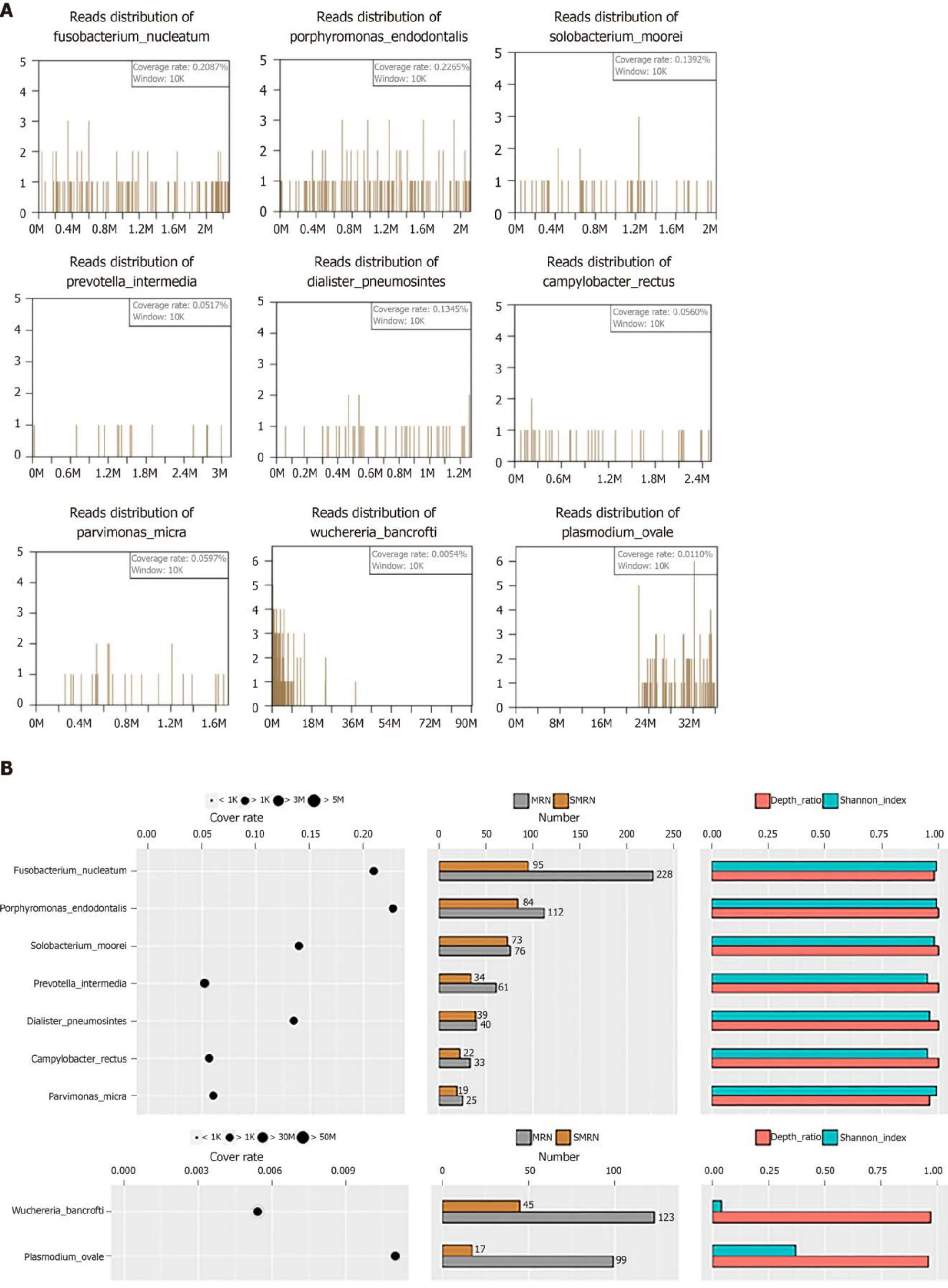
Figure2 The next-generation sequencing results revealing the presence of the following pathogenic microorganisms in the traditional cerebrospinal fluid of the patient.
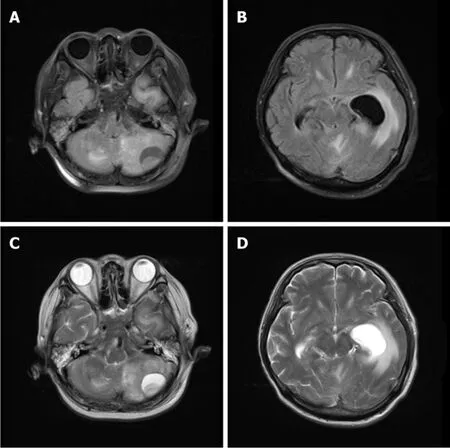
Figure3 Head magnetic resonance imaging upon admission.
TREATMENT
After admission,the patient underwent several extracentricular drainages and lumbar punctures.The antibiotic therapeutic scheme was adjusted immediately to vancomycin,meropenem,gentamicin,and S-ornidazole combined with anti-infective treatment.
OUTCOME AND FOLLOW-UP
The patient died of brain stem injury-induced respiratory circulatory failure at 2 mo after admission.The timeline of the case is shown in Figure 5.
DISCUSSION
Brain abscess is an extremely rare,life-threatening disease in neurosurgery,and its morbidity is reported to be 1/100000 in the Unites States[1].In the early 1970s,the mortality of brain abscess was 30%-60% but was reduced to 0-24% in recent years due to the rapid development of neuroimaging techniques (such as CT and MRI),the development of more effective antibiotics,and the improvement of surgical techniques[5].Among all causes of brain abscess,otogenic causes account for 65.75%,hematogenous causes account for 13%,and odontogenic causes account for a low fraction.In addition,only <5% of dental focal infection-induced brain abscesses manifest as pyocephalus,which is extremely rare[1,2].
As part of the Human Microbiome Project,the molecular identification method has been used to identify over 1200 kinds of microorganisms in the human oral cavity[6].Over 350 distinct microorganisms were isolated from marginal periodontitis[6],and 150 different bacterial strains were isolated from endodontic infections[7].The commonly seen pathogenic microorganisms includeStreptococcus viridans(especially the anginosus group),Actinomyces,Peptostreptococcus,Prevotella,Fusobacterium,Aggregatibacter actinomycetemcomitans,andEikenella corrodens[2].The next-generation sequencing results suggested that the 11 infectious bacteria in our patient were mostly colonizers of the oral cavity.
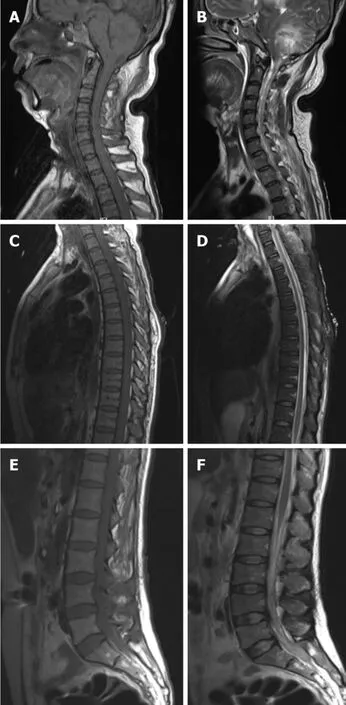
Figure4 Spinal magnetic resonance imaging on admission.
Research shows that the pathogenic microorganisms result in dental focal infectioninduced brain abscess through the following four pathways:(1) Systemic bacteremia;(2) Direct drainage to the cavernous sinus through facial and pterygoid vein systems;(3) Infection through continuous diffusion;and (4) Lymphatic drainage[8].The most likely infection pathway of our patient was systemic hematogenous infection.The patient had a past dental operation history,and she did not receive systemic treatment.Dental operations cause periodontal vascular endothelial damage,and as a result,a large number of oral bacteria enter the blood.According to the research by Robertset al[9],periodontal small blood vessel injury results in bacteremia,and 38.5%of people have transient bacteremia even in daily tooth brushing.Our patient had a history of hypertension,and her blood brain barrier (BBB) integrity was destroyed.The BBB is an important defense barrier in the human body that provides physical protection for the central nervous system (CNS).However,in hypertensive patients,the BBB is broken,which may result in leakage of small arterioles,thus promoting the occurrence of bacteremia[10].
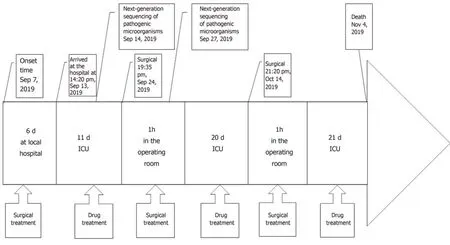
Figure5 Timeline of the case.
CT examination is the preferred imaging modality,and a plain MRI scan combined with DWI should be performed subsequently[2].MRI-DWI can distinguish benign abscesses from primary or metastatic tumors[2].Its typical MRI manifestation includes the liquid level formed by fester,necrotic debris,and CSF in the cerebral ventricle.Fester and debris are located at the weight-bearing sites in the occipital horn and trigonum of the cerebral ventricle;compared with the CSF signal,fester tissue debris shows a slightly low T2WI signal and a slightly high T1WI signal[11-13].
Additionally,CSF bacterial culture is an essential laboratory examination.However,under certain circumstances,standard bacterial culture may not serve as an effective pathogen identification method,particularly when the source of infection is suspected to be derived from the oral cavity.This is because numerous oral bacteria are fastidious pathogenic bacteria,which may not necessarily grow in culture sufficiently to allow easy identification.Some bacteria induce infection only in the presence of other pathogenic bacteria,and they are called concomitant pathogens[2].In addition,traditional bacterial culture is time-consuming.Therefore,we adopted a new pathogen detection method,namely,next-generation sequencing.Its principle is to employ the second-generation high-throughput sequencing technique to sequence the nucleic acid in the sample,carry out a comparative analysis through the microorganism database according to the metagenomics principle,and obtain the species information of the suspected pathogenic microorganism by means of an intelligent algorithm[4].Using this microorganism detection method,results are obtained in 1 d,and it can achieve high accuracy[4].After the patient was admitted,we conducted traditional bacterial culture and pathogenic microorganism next-generation sequencing at the same time.The results of multiple bacterial cultures were negative,while pathogenic microorganism next-generation sequencing identified multiple oral microorganism infections.The antibiotic usage scheme was adjusted immediately based on the pathogenic microorganism next-generation sequencing results,and the CSF white blood cell count in the patient decreased from 551723 × 106mmol/L to 33 × 106mmol/L.The appearance of the CSF also changed from the original resemblance to rice water to that of a faint-yellow,clear liquid (Figure 6).
In terms of treatment,enough importance should first be attached to the progression of CNS disease,which should be regarded as a life-threatening,severe,acute disease[14].Once a diagnosis is confirmed,treatments from three aspects should be applied immediately:(1) Aggressive surgery for abscess debridement or drainage;(2) Suitable combined antibiotic treatment selected according to the pathogenic microorganisms;and (3) Treatment specific to the primary infection lesion[14].In our patient,the antibiotics combined with anti-infective treatment were adjusted in a timely manner,and local oral treatment was also applied,but the antibiotics that had been applied at the local hospital did not cover all pathogenic bacteria,and the brain stem function was subjected to irreversible damage,finally leading to patient death.
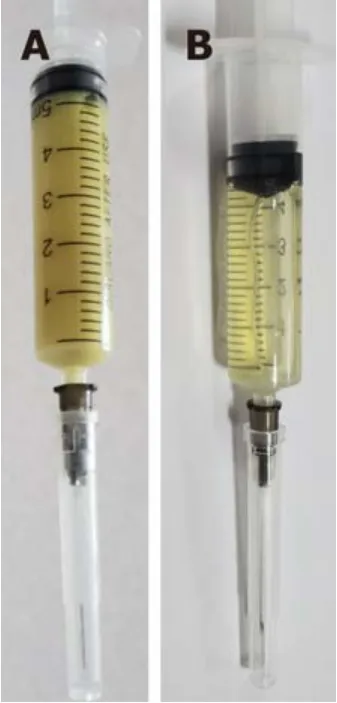
Figure6 Traditional cerebrospinal fluid.
CONCLUSION
Dental focal infection-induced ventricular and spinal canal empyema is an extremely rare,severe,acute disease with high morbidity and mortality.Any delay in diagnosis and treatment will result in irreversible consequences.The early application of the next-generation sequencing technique can obtain results in a short time and clarify a diagnosis.Appropriate antibiotic treatment combined with suitable surgical intervention is the key to managing this disease.
杂志排行
World Journal of Clinical Cases的其它文章
- Acute esophageal obstruction caused by reverse migration of gastric bezoars:A case report
- Effect of chidamide on treating hepatosplenic T-cell lymphoma:A case report
- Multiple recurrent cystic echinococcosis with abdominal aortic involvement:A case report
- Intra-abdominal inflammatory pseudotumor-like follicular dendritic cell sarcoma associated with paraneoplastic pemphigus:A case report and review of the literature
- Mucoepidermoid carcinoma in the infratemporal fossa:A case report
- Pulmonary benign metastasizing leiomyoma:A case report and review of the literature
